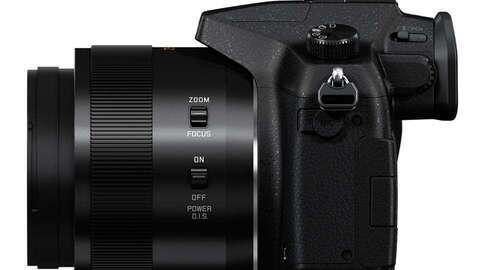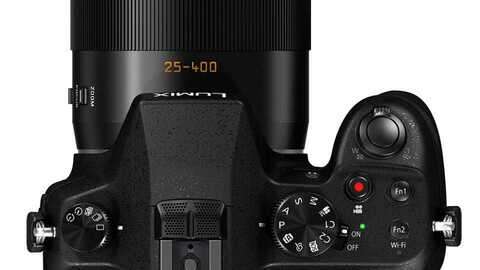Panasonic FZ1000 review
It's not often that a camera comes along and totally shakes things up. We're not referring to the Panasonic FZ1000, though. It was the Sony RX10 that broke the mould for bridge cameras. Its large 1in sensor has over four times the surface area of the 1/2.3in sensors used in most bridge cameras, with an equivalent boost to image quality. Its constant f/2.8 aperture lens raised quality in low light even further. With breathtaking performance and luxurious design, it fully justified its £949 launch price.
Sensor sizes and apertures aren't the first things most people check when shopping for a camera, though. The RX10's 8.3x zoom range gives a fair amount of flexibility but it isn't what people expect from a bridge camera.

The Panasonic FZ1000 is very similar to the RX10 but arrives with an immediate advantage with its 16x (25-400mm) zoom range. That's still modest compared to the 50x and 60x zooms doing the rounds these days. We find focal lengths beyond 600mm quite unwieldy, though, as it becomes tricky to frame subjects. 25-400mm is a versatile, highly practical zoom range.

The FZ1000's sensor has the same 1in size and 20-megapixel resolution as the Sony RX10's – most likely it's the same sensor. However, unlike the RX10's constant f/2.8 aperture, the FZ1000 manages f/2.8 for wide-angle but closes down to f/4 by 170mm and stays there all the way to 400mm. f/4 is still bright for a bridge camera, but it captures half as much light as f/2.8
Both cameras are substantial, weighty affairs, but the plastic FZ1000 can't match the luxury of the magnesium alloy RX10. It lacks the RX10's top-mounted screen for relaying settings and its dedicated exposure compensation dial. It includes a drive mode dial, though, giving quick access to continuous shooting, the self-timer, exposure bracketing and time-lapse capture. There's no headphone socket and no neutral-density (ND) filter, but the lens has a 62mm thread to attach filters. Both cameras have Wi-Fi with NFC, but the FZ1000's accompanying iOS and Android apps provide far more comprehensive remote control facilities than Sony's apps.

A lens ring alternates between focus and zoom duties via a switch on the lens barrel. However, this switch and another for optical stabilisation are too easy to knock by accident. Otherwise, the controls are nicely laid out, with labelled buttons for the most commonly used functions and various customisable Fn buttons. There's a manual focus switch on the back of the camera, plus a command dial that is pushed inwards to cycle through exposure-related controls.
Buy now from John Lewis & Partners
Both cameras use the same 2.4-million dot electronic viewfinder, which compares well for size and detail with a full-frame SLR's optical viewfinder. They both have high-resolution 3in LCD screens, too. The FZ1000's screen is hinged at the side, which allows for a greater range of angles than the RX10's tilting screen. Neither camera's screen is touch-sensitive, but that's particularly disappointing in the FZ1000 considering how effectively various other Panasonic cameras use their touchscreens.
The RX10 was astonishingly quick in our tests. The FZ1000 is even quicker. It powered up and captured a photo in under a second, and took just 0.3 seconds between shots – one of the fastest we've ever seen. This was thanks in part to spectacular autofocus performance, typically taking a tenth of a second between pressing the shutter button and capturing a shot. Continuous performance didn't hit the claimed 12fps speed in our tests, but 9.5fps for 43 frames, slowing to around 1.2fps, is nevertheless an outstanding result. Even more impressive was its ability to shoot at 7.3fps with continuous autofocus. This is a massive improvement on the RX10's 1.4fps performance in the same test. RAW shooting was at 9fps, slowing to 1.4fps after 12 frames.
Autofocus is also extremely sophisticated. The face detection mode zones in on the eyes to ensure they're pin sharp when there's a shallow depth of field. A Custom Multi mode lets the focus area be defined as a horizontal or vertical line or even a freely assignable array on a 7x7 grid. The 1-Area mode can place the autofocus area anywhere in the frame, with a freely adjustable size ranging from a tiny square to virtually the full height of the frame.